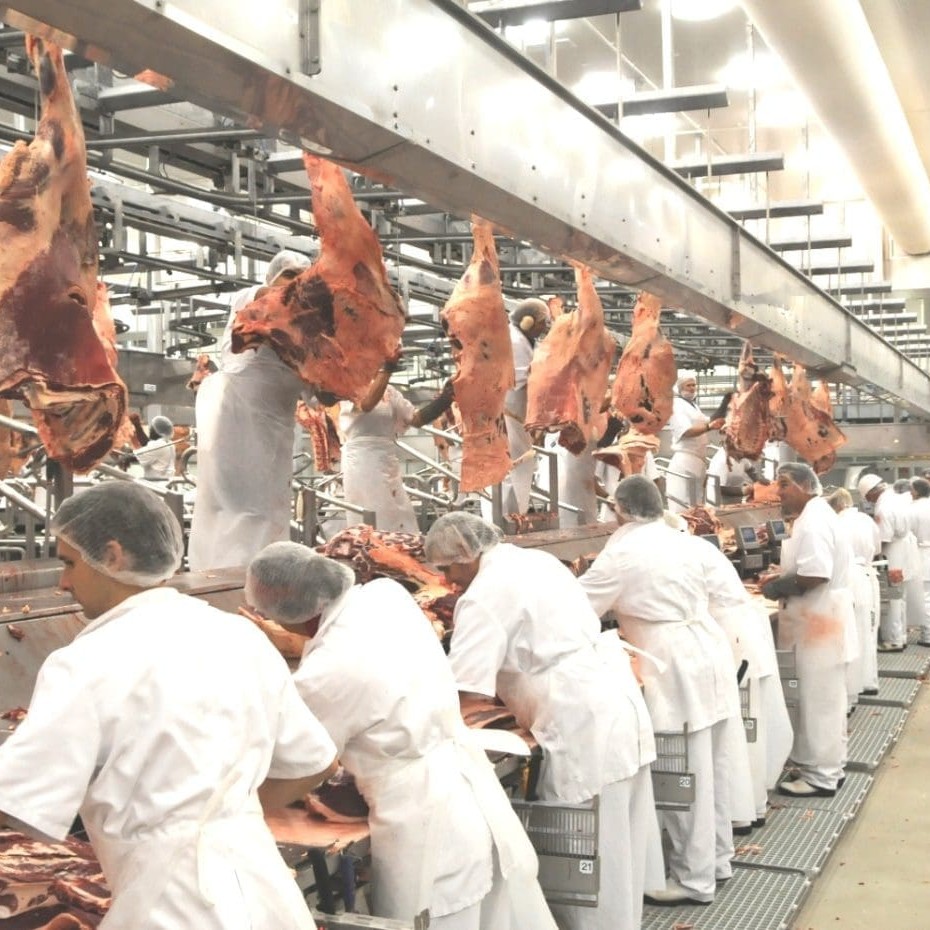 The recent eastern Australian weather events delivered a glancing blow to last week’s beef slaughter numbers, but activity will fall away further in this week’s tally, with a brace of plant closures planned as cattle prove hard to source in Queensland.
The recent eastern Australian weather events delivered a glancing blow to last week’s beef slaughter numbers, but activity will fall away further in this week’s tally, with a brace of plant closures planned as cattle prove hard to source in Queensland.
The National Livestock Reporting Service reported an Eastern States kill for the seven days ended Friday of 144,503 head, down 2.6 percent from the previous week’s season-high.
All states were affected, bar South Australia, which recorded a 7pc rise to 9074 head.
Queensland’s kill was back 5pc to 73,048 head, although to put the recent check into perspective, it was still 6pc better than this time last year when there was a slow start to the killing year.
In southern states, NSW and Victoria were both back 1pc to 34,237 and 23,565 head respectively, while Tasmania was slightly down at 4579 head.
This week will see further big disruptions to kills in Queensland, processors told Beef Central yesterday. Falls of 50-150mm have been widespread, but again confined more to eastern parts of the state. Storm rain was evident further west, but was very patchy.
This sparked some big booking cancellations over the weekend, as paddocks and roads became impassable. One southeast Queensland processor lost 16 decks in a single consignment from today’s kill.
“They yarded enough for a stew at Toowoomba sale yesterday, but it’s impossible to simply top-up those sort of lost numbers out of the saleyards, on short notice,” the processor contact said.
Saleyards this week have also been impacted by the weather, with today’s Roma store sale halved in size back to 5000 head, and a rash of cancellations in smaller yards closer to the coast including Kingaroy, Murgon, Moreton and Gympie. No word as yet on tomorrow’s Dalby sale.
Big rain over the weekend in Central Queensland has hampered access to this week’s bookings at Rockhampton and Biloela. Teys Australia was unable to raise a kill for today or tomorrow at Biloela, and will miss a day also at Lakes Creek near Rockhampton, and Beenleigh in the south.
JBS plans to skip at least one day at its Dinmore site and possibly Rockhampton, and Nippon Oakey plans to lose a day, at least, on Thursday.
Further north, Borthwicks Mackay managed to raise a kill yesterday and today, but it remained a ‘day to day proposition’ for later in the week, livestock manager Malcolm Kinman said. But he conceded that the plant would be lucky not to lose time by the weekend.
All that will put a big hole in the current week’s Queensland kill.
One of the features of the weather pattern in Queensland this year has been the big contrast, east to west. “The benefit so far has been limited, because while there has been some big rain around, it keeps raining in the same spots,” one processor livestock manager said yesterday.
“It’s developing into the haves, and have-nots. People further west are still desperate for a drink, while those on the eastern side have almost had too much. The broader industry is not getting any real gain out of it.”
Several processors reported large lines of season-affected cows from northern and western areas starting to hit the market, and the trend was evident in the percentage of females in the Queensland kill last week – up to 38pc, after sitting below 30pc for long periods last year.
The restoration of full cattle train services from the west is likely to see more cows presented for slaughter, one Queensland processor said.
Feedlots help plug holes
One factor which has been apparent this week has been the ability of feedlots, with easily-accessible cattle and typically located on all-weather roads, to plug holes in the killing rosters of processors impacted by weather along the coast.
Both processor-owned company feedlots and independently-owned yards have been a valuable source of ‘continuity’ for exporters this week – particularly as feedyards have filled up since October last year.
“They might have 100-day cattle that have done their time, but aren’t due for slaughter til next week. Those sort of cattle are valuable during tight weeks like this,” one southeast Queensland processor said.
“But while we bring those grainfed cattle forward, it can only happen for a period, before you run into cattle that aren’t current,” he said.
Southeast Queensland processor grids have generally either gone up 5c, or remained unchanged this week, but there is no real evidence of processors trying to ‘flush’ cattle out of wet areas by offering bigger money.
While recent softening in currency value is helping processor sums a little, it takes time for currency movements to filter through the system.
“It’s still too early to factor that in in livestock pricing,” a processor said.
Another consideration was that buyers in importing countries often tried to take advantage of such currency movements, in seeking to lower their meat buy price.
Exporters in general had now been coping with an A$ above parity for the best part of three years.
While a reliable source suggested processors were ‘slightly in the black’ on slaughter cattle margins at present, they fact they wrote a lot of red ink over the past two years suggested they would try to conserve that margin this year, if at all possible. That could further impact cattle prices as the year progresses.
“After two hard years, there’s a reluctance generally among processors to chase cattle, regardless of wet weather. Processors want to put something back into the kick, after a couple of years of bad numbers,” the contact said.
“There’s evidence that there’s going to be a flow of cattle this year, and if that happens, cattle prices may slide further, especially if it stays dry in the west.”
